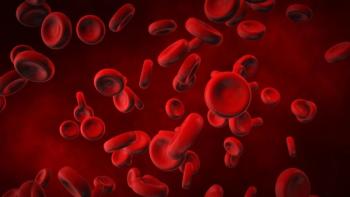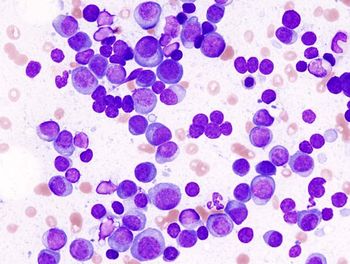
Oncology NEWS International
- Oncology NEWS International Vol 15 No 8
- Volume 15
- Issue 8
Thal/Dex Bests Dex as First-Line Therapy for Myeloma
Patients with newly diagnosed multiple myeloma have better progression-free survival with the combination of thalidomide (Thalomid) and dexamethasone (Thal/Dex) than Dex alone
ATLANTAPatients with newly diagnosed multiple myeloma have better progression-free survival with the combination of thalidomide (Thalomid) and dexamethasone (Thal/Dex) than Dex alone, according to data from a randomized, double-blind, placebo-controlled trial. S. Vincent Rajkumar, MD, of the Mayo Clinic, Rochester, Minnesota, presented results of the trial (MM003) at the American Society of Clinical Oncology 42nd Annual Meeting (abstract 7517).
MM003, he noted, was separate from E1A00, the trial conducted by ECOG, which was used by the FDA as the basis for accelerated approval of Thal/Dex for the treatment of newly diagnosed multiple myeloma; that trial had an open-label design and did not assess time to progression.
Patients with untreated, symptomatic, multiple myeloma received dexamethasone (40 mg on days 1-4, 9-12, and 17-20) plus either thalidomide (50 mg escalated up to 200 mg given on days 1-28) or placebo for four courses, followed by more courses of the same with the exception of reduced dexamethasone dosing (40 mg on days 1-4 only). Patients were treated until disease progression, with interruptions allowed for stem cell harvest.
Results of the preplanned interim analysis were based on 235 patients in each arm. According to Blade criteria, the overall rate of response was significantly higher with Thal/Dex than with Dex alone (49% vs 35%). The respective rates of complete response were about 5% and 1%. Noting that analyses were by intention to treat and data are still forthcoming on some patients, Dr. Rajkumar said that "the absolute rates are likely to increase."
The time to progression was significantly longer with Thal/Dex than with dexamethasone alone (not reached vs 8.1 months), prompting early closure of the trial. Data thus far, he added, suggest that the value with combination therapy will likely exceed 18 months. Overall survival did not differ significantly between the Thal/Dex and Dex arms (not reached vs 25.2 months), but follow-up was relatively short at the time of the analysis, he noted. The rate of grade 3-4 deep vein thrombosis and pulmonary embolism was 18% in the Thal/Dex arm vs 4% in the Dex arm. "This trial was . . . initiated several years ago, before we started incorporating routine thromboprophylaxis, so there was no routine mandatory prophylaxis required on this study," he pointed out. "Thrombotic events are frequent [with Thal/Dex] and, from now on, I think it justifies routine prophylactic anticoagulation when using this therapy." The overall rate of discontinuation of treatment was 73% with Thal/Dex and 92% with Dex alone. However, Dr. Rajkumar noted, "the main reason for discontinuation is different between the two arms at this point." Patients in the combination arm were more likely to stop because of adverse events (24% vs 9%) but were less likely to stop because of progressive disease or lack of effect (29% vs 61%).
Articles in this issue
over 19 years ago
Younger Age at Brain Tumor Diagnosis Portends Poor Emotional Outcomeover 19 years ago
Triple Targeted Therapy Is Tested in Pts With Solid Tumorsover 19 years ago
FDA Approves Three-Drug Combination Tablet for HIV-1over 19 years ago
Side Effects Persist 16 Years After Prostate Ca Brachytherapyover 19 years ago
No Significant QOL Differences for Raloxifene and Tamoxifenover 19 years ago
Amrubicin Appears Promising in Small-Cell Lung Cancerover 19 years ago
R-MP Active in Older Pts With Newly Diagnosed Myelomaover 19 years ago
Sunitinib and Sorafenib Active in Phase II Advanced NSCLC Trialsover 19 years ago
Takeda Signs Agreement With Galaxy Biotech for HuL2G7Newsletter
Stay up to date on recent advances in the multidisciplinary approach to cancer.


















































































